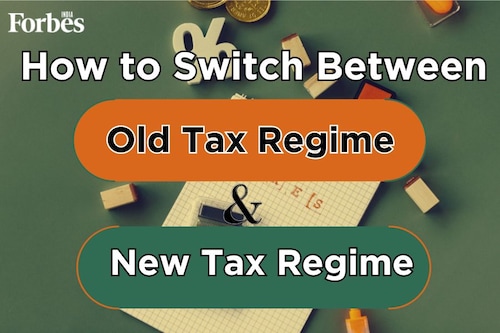ITR filing: How to switch between old and new tax regimes
Did you know you can change the tax regime while filing an ITR? Understand how to make the switch and learn about important deadlines. Reduce your tax burden


Filing an ITR can be overwhelming, especially nowadays, due to its recent transformative phase. The tax system in India added a new tax regime in budget 2020 for HUF taxpayers and individuals, offering them an option to pay lesser tax with fewer deductions and exemptions to claim under section 115AC. On April 1, 2023, the CBDT (Central Board of Direct Taxes) announced that if an individual manually does not select the old tax regime, the employer will deduct their TDS based on the new tax regime.
Understanding the difference between these two regimes is crucial to accurately calculating an income tax return and determining your slab. This guide focuses on decoding the basic definitions and explaining how to switch between old and new regimes.
The old tax regime is a traditional income tax structure in India that allows taxpayers to claim various deductions and exemptions to reduce their taxable income. Individuals and taxpayers can lower their overall tax bill by claiming these deductions.
For example, you can claim HRA, deductions for investing in tax-saving instruments like the PPF (withdrawal rules) and life insurance (Section 80C), paying health insurance premiums (Section 80D), paying interest on home loans (Section 24), paying interest on education loans (Section 80E), and donations/ charities (Section 80G).
The new tax regime is also the income tax structure in India, introduced in 2020 under the 115BAC section. It allows taxpayers to pay taxes at lower rates but with fewer deductions and exemptions relative to the old tax regime. The key benefit is its simple tax structure with lower rates, especially for those with lower incomes and minimal deductions.
The new tax regime"s deductions include the National Pension System (NPS), the Public Provident Fund (PPF), life insurance premiums, and others under Section 80C. Despite Section 80CCD and 80JJA, the new tax regime offers no exemptions or deductions to taxpayers.
The old tax regime is generally more suitable for taxpayers with high incomes and significant tax-saving investments. On the other hand, the new regime is a good selection for those with lower incomes and minimal deductions.
The tax system in India allows taxpayers to switch between the old and new tax regimes annually according to their preferences. To switch between regimes, taxpayers need to file Form 10IE, which serves as the communication channel with the tax authorities regarding their choice of tax regime.
Here is a step-by-step process for filing Form 10IE :
- Part B: Indicate whether you have income from a business or profession.
- Part C: Select the tax regime you wish to opt for - new or old.
Here are the basic details required to fill out Form 10IE that you can keep handy:
Here is who can switch between the old and new tax regimes:
Salaried Individuals
When is the deadline for switching tax regimes in India?
The deadline to switch regimes is the due date for filing your ITR under Section 139(1) of the Income Tax Act. For FY2023-24 (the assessment year 2024-25), the due date is July 31, 2024, unless extended.
Is there any way to switch tax regimes after missing the deadline?
If you miss the deadline to switch regimes while filing your income tax return, you will be taxed under the default regime (new tax regime) for that year.
Who is not eligible to switch between regimes every year?
Individuals with income from business or profession (one-time) and individuals who opt out of the new regime can not return for the new tax regime.
Is the 80C deduction applicable in the new tax regime?
No, the new tax regime does not allow claiming deductions under Section 80C, such as PPF, NPS, and life insurance premiums. The old tax regime continues to offer deductions under Section 80C to reduce taxable income.
First Published: Jul 12, 2024, 12:25
Subscribe Now